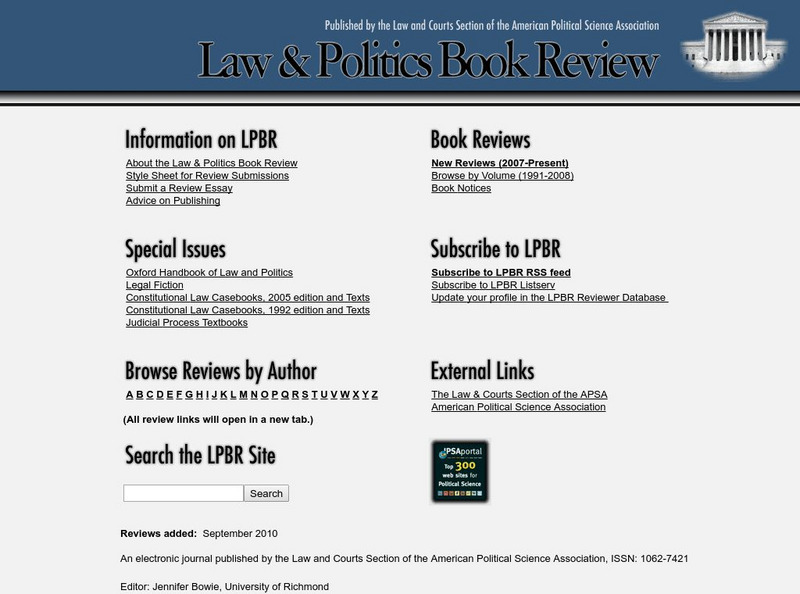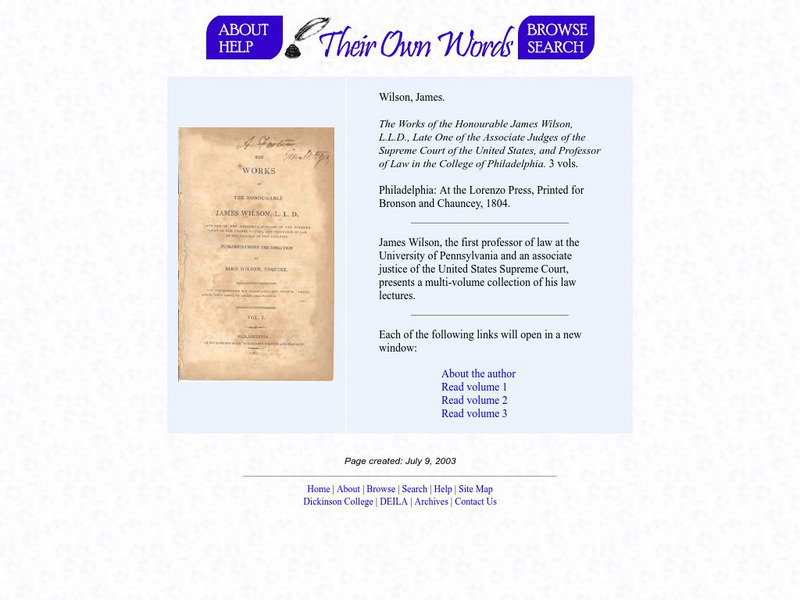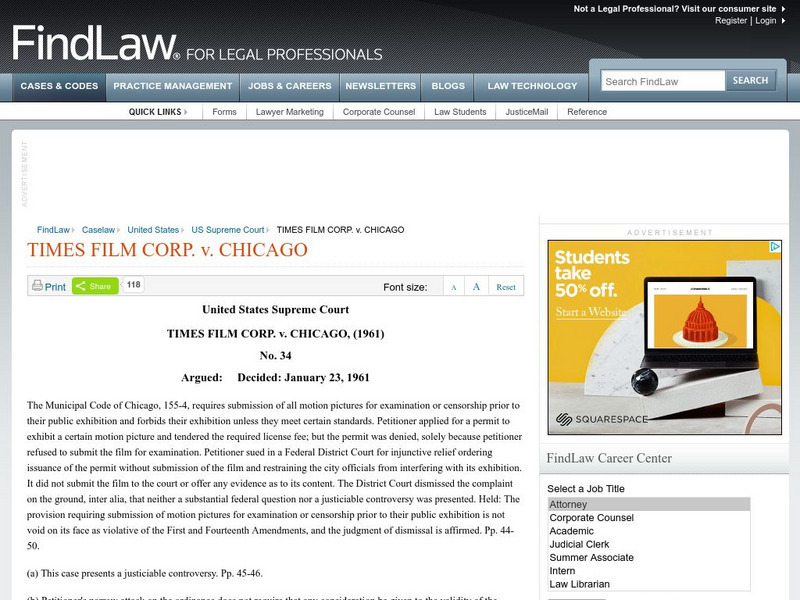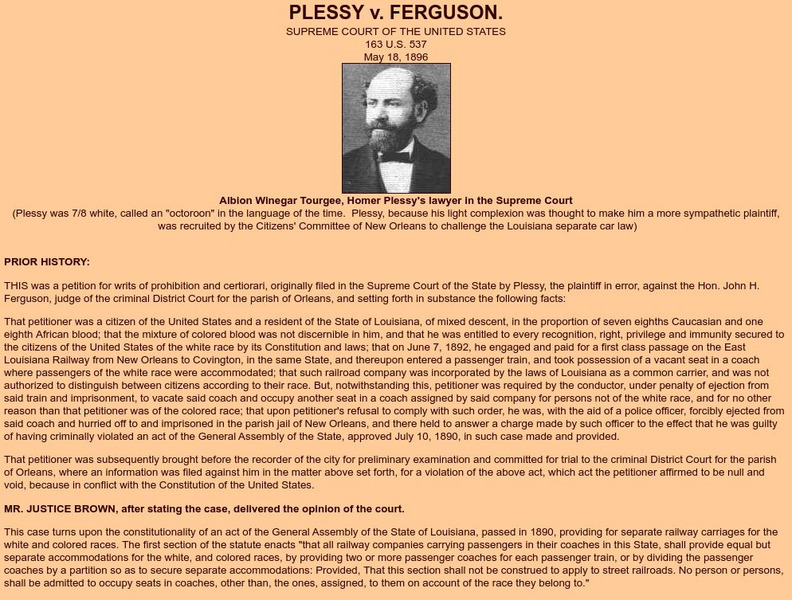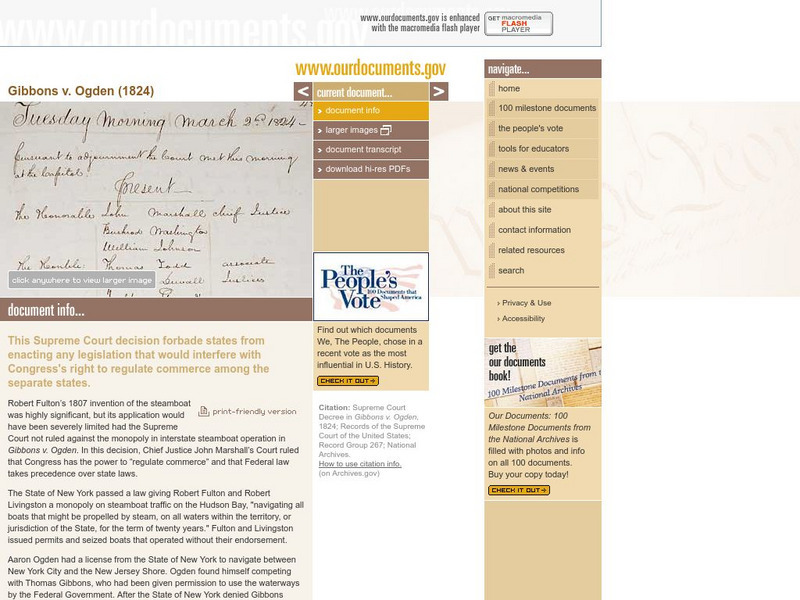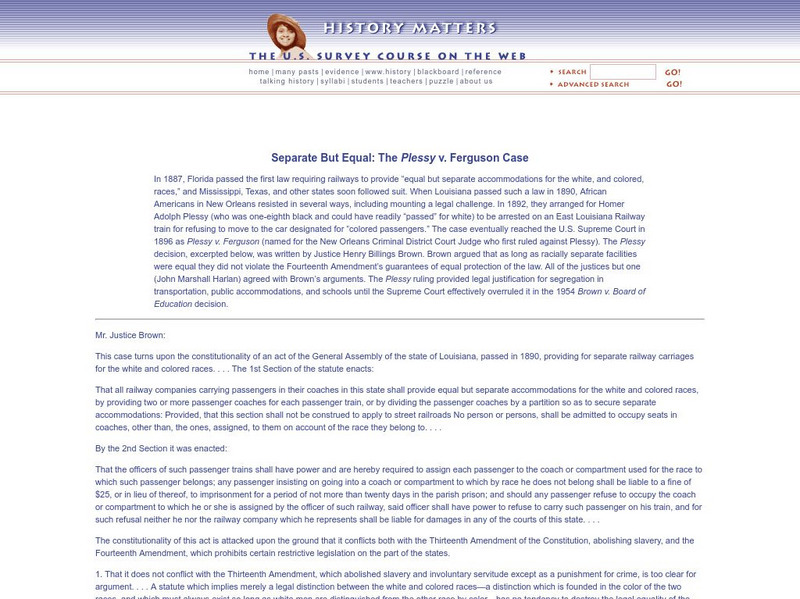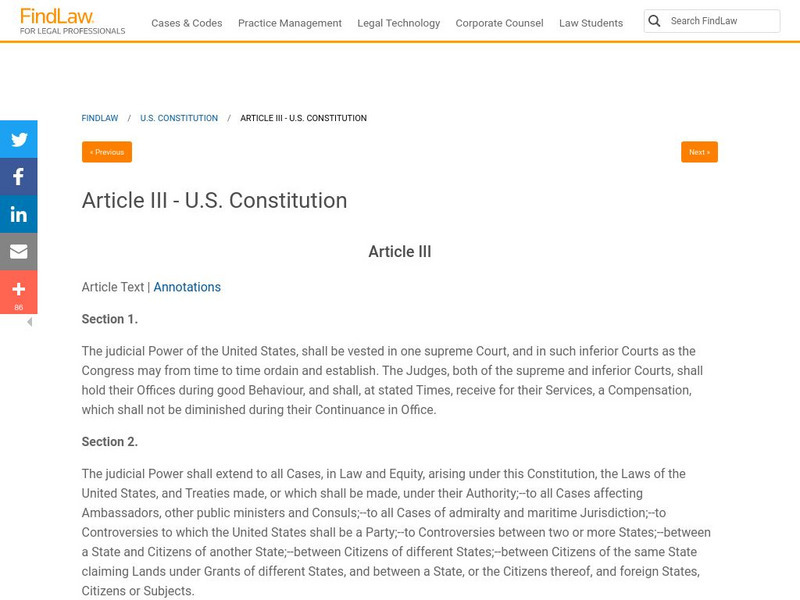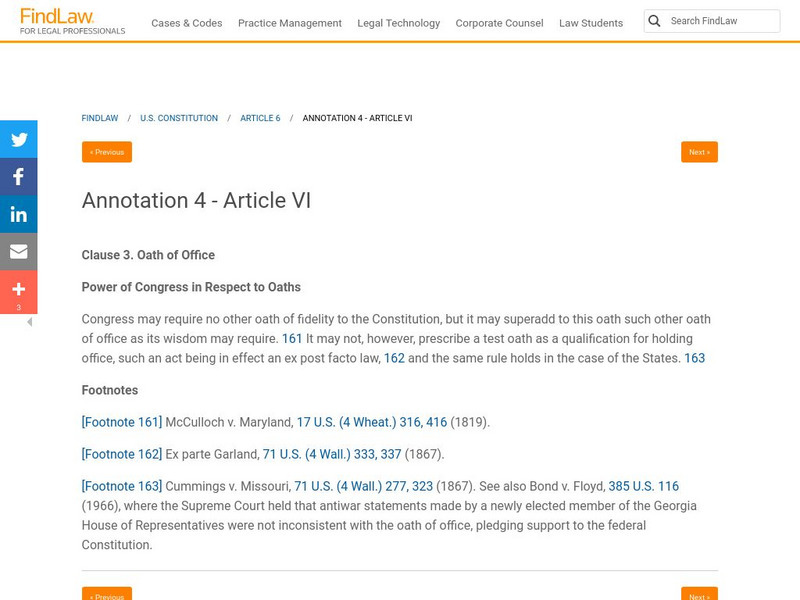CommonLit
Common Lit: Gault Case Changed Juvenile Law
A learning module that begins with "Gault Case Changed Juvenile Law" by Margot Adler accompanied by guided reading questions, assessment questions, and discussion questions. The text can be printed as a PDF or assigned online through...
iCivics
I Civics: Three Branches: Laws in Action
Embark on his WebQuest to follow the path an idea takes to eventually become a law. Read a short description regarding the role of each branch of government and then answer a follow-up question using the link provided.
Digital History
Digital History: The Supreme Court and the New Deal [Pdf]
Read about the conflict between the laws and regulations that were passed during Franklin Roosevelt's New Deal and the interpretation of the commerce clause by the Supreme Court. Roosevelt had a plan to change the Supreme Court. See...
Other
Unt: Deciding to Decide, the Law and Politics Book Review
This informative review of "Deciding to Decide: Agenda Setting in the United States Supreme Court" by H.W. Perry, Jr. describes the process of Supreme Court case selection.
PBS
Wnet: Thirteen: The Supreme Court: Landmark Cases: Casey v. Planned Parenthood (1992)
PBS gives a summary of the landmark Supreme Court case of Casey v. Planned Parenthood which upheld the constitutional right to have an abortion in most cases. Requirements for parental consent, informed consent, and 24-hour waiting...
Other
Law Lectures of James Wilson
The complete text of a three-volume edition of Wilson's law lectures, originally published in 1804. In addition to being a delegate to the Constitutional Convention, Wilson was the first professor of law at the University of Pennsylvania...
Thomson Reuters
Find Law: Legal Blog Network
This resource provides a network of legal blogs on every type of law and provides the latest news about court cases including the U.S. Supreme Court.
Other
Streetlaw: Introduction to Law and the Legal System
This website, a unit introducing the law and legal system, is organized into six chapters where you can learn about laws, lawmaking, citizen advocacy, dispute settlements, the court system, and lawyers.
Thomson Reuters
Find Law: u.s. Supreme Court: Times Film Corp. V. City of Chicago (1961)
Read the majority opinion of the U.S. Supreme Court in Times Film Corp. v. City of Chicago, a 1961 case that focused on free speech and obscenity.
Social Studies for Kids
Social Studies for Kids: The Supreme Court
The Supreme Court is the highest in the land. It has nine members and decides whether laws are unconstitutional. It handles appeals from federal courts or state supreme courts. Learn more about how it works and some famous Justices.
University of Missouri
Exploring Constitutional Conflicts: Plessy v Ferguson
Read the Supreme Court opinion that solidified the concept of separate, but equal in American law. The dissenting opinion written by Justice John Harlan is also included.
US National Archives
Our Documents: 100 Milestone Documents: Gibbons v. Ogden(1824)
Use this site to learn all about this Supreme Court decision that dealt with interstate commerce. View an image of the original document and read the complete text.
Cornell University
Cornell University: Law School: Equal Protection Overview
A brief overview of the Equal Protection Clause of the 14th Amendment. Includes a link to the full text of the amendment. Discusses equal protection.
Curated OER
History Matters: Separate but Equal: The Plessy v. Ferguson Case
Read the judgment of Supreme Court justice, Henry Billings Brown, who wrote for the majority in the Plessy v Ferguson decision that codified the idea of "separate but equal" in the American justice system until it was overturned by Brown...
iCivics
I Civics: Mini Lesson: Judicial Activism & Restraint
Lesson teaches the judicial philosophies of activism and restraint and also explores criteria through which students can evaluate news-related opinion pieces and practice judging the value of a Supreme Court-related opinion piece of choice.
University of Oklahoma
University of Oklahoma Law Library: Federalist Papers
The complete text of the 85 Federalist Papers which explained why the authors believed the new Constitution should be ratified.
PBS
Pbs: L. Hansberry: A Raisin in the Sun: Jim Crow, Home Ownership, American Dream
Learn how Jim Crow laws impacted home ownership and the pursuit of the American Dream in this series of videos from the American Masters film, Lorraine Hansberry: Sighted Eyes/Feeling Heart. Lorraine Hansberry's family was at the...
Other
Touro Law Center: William Marbury vs. James Madison
Transcript of the landmark court case that established the constitutional principle of judicial review. Judicial review is the concept that the federal judiciary has final power as to whether an act of the Congress or the Executive...
Siteseen
Siteseen: Government and Constitution: Article 6 of the Us Constitution
Provides a summary and full text of Article 6 of the Constitution. It establishes it as the supreme law of the United States and that public officials must take an oath to support it. It also authorizes the national debt, meaning that...
Thomson Reuters
Find Law: Article Iii: Judicial Power
Annotations to Article III on the characteristics and attributes of judicial power as related to specific Supreme Court decisions. The author distinguishes between judicial power and jurisdiction.
Thomson Reuters
Find Law: Article Vi: Oath of Office
Read the words in the U.S. Constitution, Article VI, concerning the oath of office. Link to a Supreme Court case which tested the interpretation of this article, McCullock v. Maryland, to view the decisions of the Justices.
Lectric Law Library
The 'Lectric Law Library's Lexicon: Eighth Amendment
This definition page at 'Lectric Library discusses the definition in the context of significant Supreme Court cases.
Thomson Reuters
Find Law: u.s. Supreme Court: Marbury v. Madison (1803)
This resource contains the full text of the 1803 Supreme court case, Marbury v. Madison opinion.
Cornell University
Cornell University: Law School: Overview of Marriage
This web page, which is provided for by the Cornell University Law School, explains the process of getting married and its origin.


